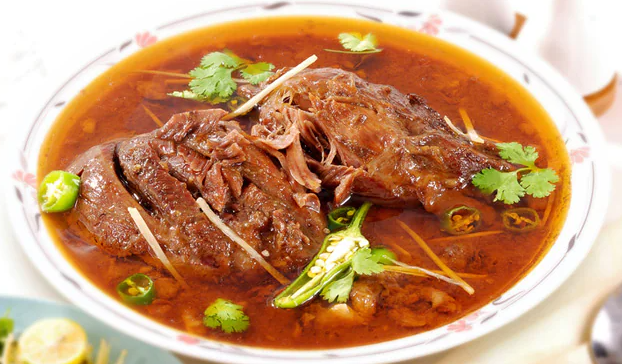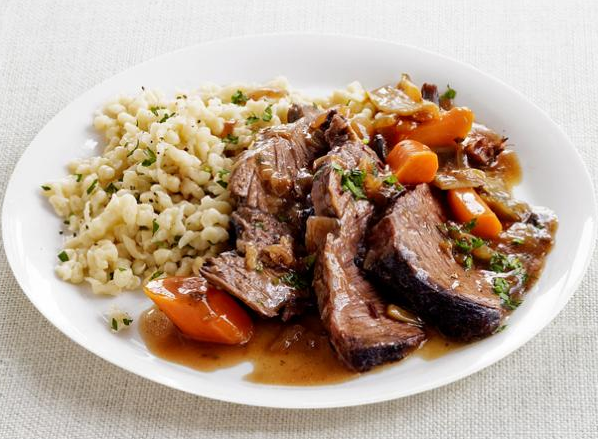Bosnia and Herzegovina, a country located in Southeast Europe, is known for its rich culinary heritage. One dish that stands out as the national favorite the Bosnia and Herzegovina National Dish is ćevapi. These delicious grilled meat sausages have captured the hearts and taste buds of both locals and visitors alike. In this article, we will delve into the history, preparation, cultural significance, and more surrounding ćevapi.
History of Bosnia and Herzegovina National Dish
Ćevapi can trace its roots back to the Ottoman Empire, which heavily influenced the region’s cuisine. The dish was introduced to Bosnia and Herzegovina during the Ottoman rule, and it has since become an integral part of the country’s culinary identity.
What is ćevapi?
Ćevapi are small, finger-shaped sausages made from a blend of ground meats, typically beef and lamb. The meat is seasoned with various herbs and spices to enhance its flavor. These juicy sausages are traditionally grilled to perfection, resulting in a smoky and mouthwatering taste.
Ingredients used in ćevapi
The key ingredients in ćevapi include ground beef, ground lamb, salt, pepper, garlic, and other herbs and spices. The meat mixture is carefully prepared to achieve the perfect balance of flavors, ensuring a delightful culinary experience.
Traditional preparation of ćevapi
To prepare ćevapi, the ground meats are combined with the seasonings and mixed thoroughly. The mixture is then shaped into finger-sized sausages and left to marinate for some time, allowing the flavors to meld together. Finally, the sausages are grilled over an open flame until they are cooked through and acquire a delectable smoky char.
Regional variations of Bosnia and Herzegovina National Dish
While the basic recipe for ćevapi remains consistent, there are regional variations that add a unique touch. In Sarajevo, the capital city of Bosnia and Herzegovina, ćevapi are often served with somun, a type of Bosnian bread. In other regions, you may find different meat ratios or variations in the seasoning, creating subtle differences in taste and texture.
Popular accompaniments for ćevapi
Ćevapi are typically served with a side of onions, sour cream, and a red pepper relish known as ajvar. These accompaniments complement the flavors of the sausages, providing a refreshing contrast and enhancing the overall taste experience.
Cultural significance of Bosnia and Herzegovina National Dish
Ćevapi hold a special place in Bosnian culture, representing a shared culinary tradition that brings people together. The dish is often enjoyed during festive occasions, family gatherings, and social events. It symbolizes unity and is a source of pride for the people of Bosnia and Herzegovina.
ćevapi as a tourist attraction
For food enthusiasts and travelers visiting Bosnia and Herzegovina, trying ćevapi is a must-do experience. Many local restaurants and food stalls specialize in preparing this beloved dish, showcasing the country’s culinary heritage. The enticing aroma of grilled meat and the sight of sizzling sausages on the grill are sure to captivate visitors’ senses.
Health benefits of ćevapi
While ćevapi are undeniably delicious, they should be enjoyed in moderation due to their high calorie and fat content. However, they also offer nutritional value, as they are a good source of protein and essential minerals. It’s important to balance indulgence with a healthy lifestyle.
How to make ćevapi at home
If you’re feeling adventurous and want to recreate the magic of ćevapi at home, here’s a simple recipe to get you started:
- Combine ground beef and ground lamb in a bowl.
- Add salt, pepper, minced garlic, and your choice of herbs and spices.
- Mix the ingredients thoroughly until well combined.
- Shape the mixture into finger-sized sausages.
- Allow the sausages to marinate for at least an hour.
- Grill the sausages over medium heat until cooked through, turning them occasionally.
- Serve hot with onions, sour cream, and ajvar.
Tips for a perfect ćevapi experience
To ensure your ćevapi are perfect every time:
- Use high-quality, lean ground meat for the best flavor.
- Let the meat mixture marinate for a sufficient amount of time.
- Grill the sausages slowly over medium heat to retain their juiciness.
- Serve ćevapi with fresh, warm bread and a variety of condiments for a well-rounded experience.
Where to try ćevapi in Bosnia and Herzegovina
When visiting Bosnia and Herzegovina, there are several places renowned for their excellent ćevapi. Some notable establishments include:
- Željo 1 in Sarajevo: A beloved local spot known for its mouthwatering ćevapi.
- Zmajevac in Banja Luka: A restaurant that has perfected the art of grilling these sausages.
- Ćevabdžinica Kod Muje in Mostar: A popular eatery where you can savor authentic ćevapi.
Interesting facts about Bosnia and Herzegovina National Dish
- Ćevapi are often enjoyed with a glass of yogurt-based drink called ayran, which helps balance the richness of the sausages.
- The word “ćevap” is derived from the Persian word “kebab,” further highlighting the historical influences on Bosnian cuisine.
- The size and shape of ćevapi can vary, with some regions favoring longer, thinner sausages, while others prefer shorter and thicker ones.
Conclusion
ćevapi, the national dish of Bosnia and Herzegovina, encapsulates the rich culinary heritage of the country. From its Ottoman origins to the modern-day popularity, these grilled meat sausages continue to be a beloved favorite. Whether enjoyed at a local eatery or prepared at home, ćevapi offer a delightful blend of flavors and cultural significance that make them truly special.
FAQs
1. What is the origin of ćevapi?
Ćevapi originated during the Ottoman Empire and have become a significant part of Bosnia and Herzegovina’s culinary tradition.
2. What are the key ingredients used in ćevapi?
The main ingredients in ćevapi include ground beef, ground lamb, salt, pepper, garlic, and various herbs and spices.
3. How are ćevapi traditionally prepared?
The ground meat mixture is seasoned, shaped into finger-sized sausages, marinated, and then grilled to perfection over an open flame.
4. What are popular accompaniments for ćevapi?
Ćevapi are typically served with onions, sour cream, and ajvar, a red pepper relish.
5. Can I make ćevapi at home?
Yes, you can make ćevapi at home by following a simple recipe using ground beef and lamb, along with seasonings and herbs.
References:
- Bogojević, S., Ćosić, I., Palić, I., Tomović, V., & Rajković, A. (2017). Sensory evaluation of traditional Bosnian sausage “ćevapi” with consumer preferences. British Food Journal, 119(1), 192-204.
- Hrnjić, A., & Aganović, M. (2015). Traditional meals of Bosnia and Herzegovina–identification of typical dishes. Mljekarstvo, 65(3), 198-205.
- Injac, R., Kolar, D., Bjelanović, M., Muhadinović, Z., & Terzić-Vidojević, A. (2013). Comparative analysis of traditional dry fermented sausage production in Bosnia and Herzegovina, Macedonia and Serbia. Meat Science, 93(4), 878-885.

